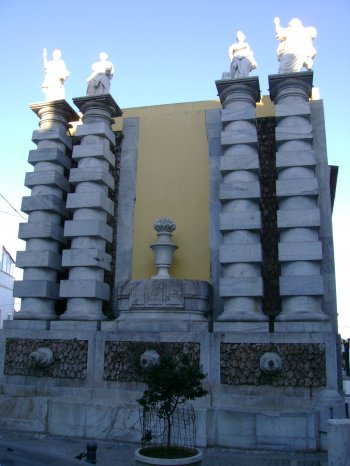Explore the best places
Monuments in Elvas
Aqueduto da Amoreira
- heritage
EN372
7350, Elvas
Built in 1498 according to traces of Francisco de Arruda and, later, Afonso Álvares, Diogo Marques and Pêro Vaz Pereira, that ended in 1622. Four floors of arcades built on buttresses rip the main part.
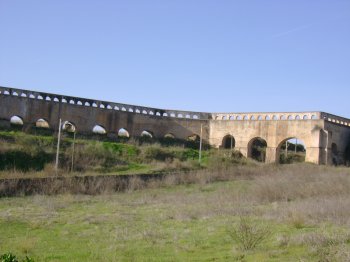
Igreja de Nossa Senhora da Assunção
- heritage
Praça da República
7350-127, Elvas
Ancient see of Elvas, this temple was built in 1517, with design by Francisco de Arruda, underwent profound modifications in the 17th century. Has longitudinal plant and is composed of three naves. The tiles from the 17th and 18th centuries.
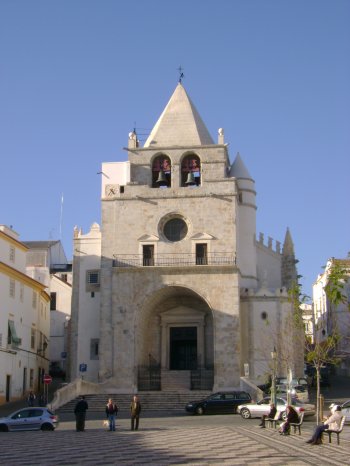
Muralhas e Obras Anexas da Praça de Elvas
- heritage
EN373
7350, Elvas
This public square has an irregular polygonal shape with twelve fronts, seven bulwarks and four half – bulwarks. The keep is located on the hillside. The defensive system from the square – fortress included Santa Luzia and Graça fortress. Nowadays it still subsist Alcáçova and Miradeiro doors.

Castelo de Elvas
- heritage
Rua da Parada do Castelo
7350-082, Elvas
The Plaza de armas has the shape of an irregular polygon. The entry in the Alcazaba is done through three main doors: the door to the corner of Olivenza and the s. Vicente. The keep was rebuilt in 1488. On the entrance door are the arms of d. João, surmounted by a tile Panel represented the Holy family. The primitive fortifications have been built on a castro later romanized. After the reconquest from the moors of Elvas, d. Sancho II had rebuilt the fortification. During the reigns of d. Dinis, King John II and Manuel suffered modifications.
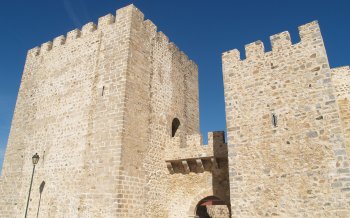
Forte de Nossa Senhora da Graça ou de Lippe
- heritage
Monte Senhora da Graça
7350-410, Alcáçova
Copy of European 18th-century military architecture, built by Don José at the spot where once existed a blockhouse. This strong bastions is situated in an impressive Rocky Mount. Fort of great aesthetic beauty is formed by large spaces, games of lines and volumes which gives it power and military effectiveness. Highlights-the residence of the Governor, an unusual building in the architectural context of the Fort. It is also referred to as fortress of Lippe, name of the author of the proposed construction. Inside you will find a chapel in honor of our Lady of grace.

Castelo de Barbacena
- heritage
Largo do Castelo
7350-431, Barbacena
Castle erected in the 16th century and rebuilt in the 17th century, of quadrangular plant, which only maintains original moth, the wall cloths and turrets. Features a carved stone portal in masonry forming a pediment with two spires and coronation. The yard has central cistern, without water, two abandoned cannon and buildings all around.
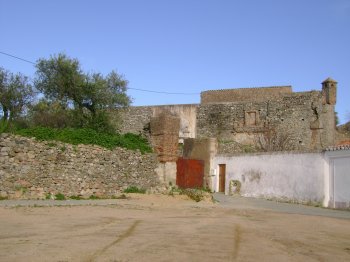
Castelo de Fontalva
- heritage
EN243-1
7350-431, Santa Eulália
The Castle as we know it today is a modern renewal of fortifications which, according to archaeological studies date back to the Castro culture. Of the primitive moth just leaves amuramento, of quadrangular, protected by turrets at the corners. In the reign of Dom João III was converted into a sunny residence castellated.
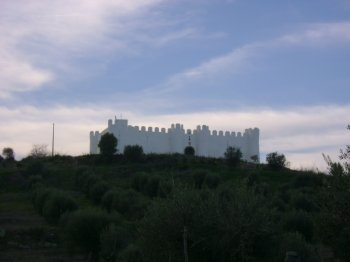
Centro Histórico de Elvas
- heritage
Elvas
7350, Elvas
Fica no Alentejo, a escassos quilómetros da fronteira com Espanha, uma das mais belas cidades portuguesas e a maior cidade fortificada da Europa. Protagonista de decisivas batalhas durante o período de restauração da independência, em meados do século XVII, o Centro Histórico de Elvas encontra-se delimitado por fortificações abaluartadas, em formato de estrela, num conjunto de irresistível encanto distinguido pela UNESCO como Património Mundial.

Ponte de Nossa Senhora da Ajuda
- heritage
Elvas
7350, Elvas
This fortified bridge used to establish the connection with Olivença and it was destroyed due to military strategy reasons.
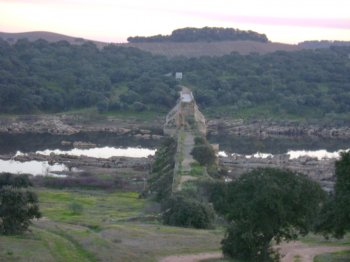
Fonte de São Lourenço
- heritage
Rua de São Lourenço
7350, Elvas
Bridge designed by military engineer Valléré, located between two streets that remain, to this day, having motor traffic. This monument stands out for its style, marked by marble columns, the fagaréu and the bicas in metal.
